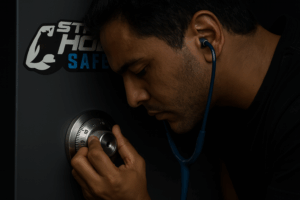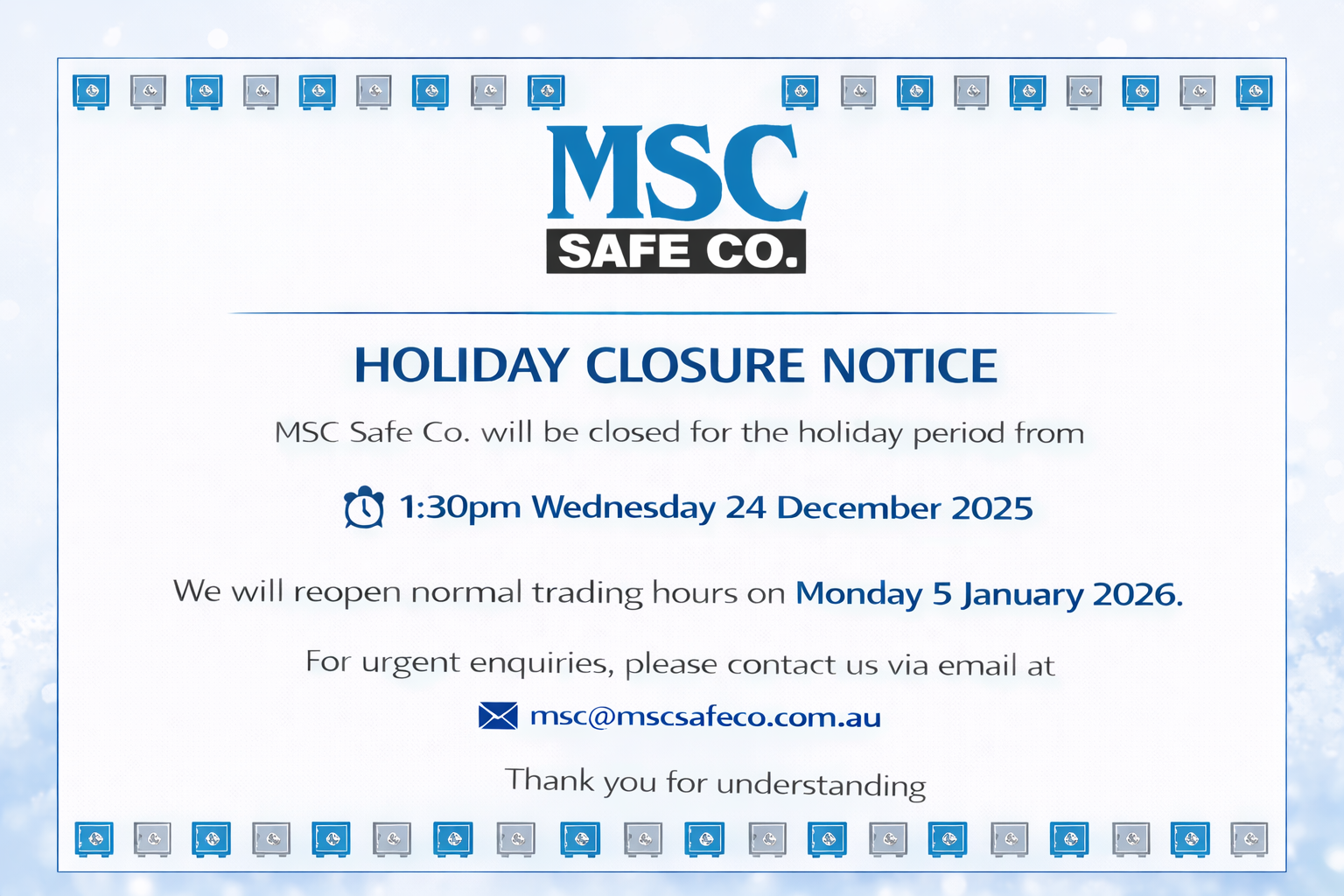
At MSC Safe Company, we’re often asked if what we see in Hollywood films about safe cracking is remotely realistic. Can someone really listen to a safe and open it without a code or key? Can it be done in just a few minutes? Do people actually use stethoscopes to “crack” a safe? And what about digital locks?
Let’s set the record straight.
What Does It Mean to “Crack” a Safe?
In the professional world of safes, we typically use the term “manipulation” when referring to opening a safe without using force. It’s a highly skilled, non-destructive method used to unlock mechanical combination or key-lock safes. Unlike what you see in movies, this process isn’t dramatic or quick—it’s detailed, methodical, and requires years of practice.
Mechanical Combination Locks
Mechanical combination safes can sometimes be manipulated open by trained professionals. While movies often show someone using a stethoscope, in reality, most safe technicians rely on touch and feel—not just sound. There are subtle indicators inside the lock mechanism that professionals learn to detect through experience. This includes sensing tiny differences in resistance or movement that can reveal how the internal components are aligning.
There are typically multiple wheels inside a mechanical lock, and the goal is to align these wheels to their correct positions so the lock opens. Because manufacturing tolerances vary slightly, technicians look for imperfections—“high” or “low” points on the wheels—that can be used to help determine the correct combination. These findings are often charted or recorded to map out the likely unlocking sequence.
Manipulating a safe successfully is equal parts science, art, and patience. It’s not something just anyone can do with a stethoscope and a stopwatch.
How Long Does It Really Take?
While expert safe technicians may occasionally open a lock in under 15 minutes during competitions or training exercises, the real-world timeframe is closer to 60 minutes—or even longer—depending on the lock’s complexity. Four-wheel combination locks, for example, are significantly harder to manipulate than standard three-wheel versions.
So yes, Hollywood has taken liberties for entertainment’s sake.
What About Electronic Locks?
Electronic or digital safe locks are a different story. High-quality electronic locks—those made by reputable manufacturers—cannot typically be manipulated like mechanical ones. These are designed with advanced security features that resist tampering and bypass attempts.
However, inexpensive electronic safes, especially those found in big-box hardware or office supply stores, often cut corners in quality, design and security. These can be tricked open with magnets, power surges, or even physical taps—techniques that would never work on a properly engineered safe.
At MSC Safe Company, we only work with electronic locks that meet strict security standards. These are resistant to manipulation and often require forceful methods—like drilling—to access without a code.
What Should You Take From All This?
Here’s the bottom line: while manipulation is possible, it’s rare outside of professional circles. Most real-world attacks on safes involve brute force, not clever manipulation.
That’s why it’s critical to choose a safe that’s built to resist forced entry first and foremost. Combine that with a reliable, quality lock—mechanical or electronic—and you’ll have robust protection against both casual and sophisticated attacks.
And remember, the same skilled, police-licensed technicians who know how to open safes without damaging them are also the ones who help you choose the right one. If it’s hard for us to get into, it’s going to be even harder for anyone else.

